Explore the City’s Distinctive Areas and Hidden Gems
From tucked-away bohemian enclaves to celebrity-studded streets, Palm Springs is more than just palm trees and poolside lounging. It's a vibrant patchwork of neighborhoods, each with its own personality, architecture, and story to tell. Whether you’re seeking midcentury modern marvels, artist hideaways, or sun-soaked hiking trails with a view, there's a pocket of Palm Springs waiting for you to discover it.
Use this guide as your inspiration to step off the beaten path and explore the unique charm, history, and design that define Palm Springs' many neighborhoods.
Andreas Hills
Nicknamed the "Bel Air of Palm Springs," Andreas Hills is where desert serenity meets scenic drama. Surrounded by the Indian Canyons, it’s a haven for outdoor lovers. Stroll the same trails once traveled by Frank Bogert, the city’s iconic cowboy mayor, or make your way to Southridge for a glimpse of Bob Hope’s famous flying-saucer-shaped home. Quiet, upscale, and beautifully situated—this neighborhood is a true desert escape.

Araby Commons
Midcentury magic meets mountain views in Araby Commons. Just below the cliffs of Southridge (home to Bob Hope’s legendary estate), you’ll find a collection of cool, low-key condo communities like Imperial Park South, Coco Caban, Sandcliff, and Marbella. It’s a quieter corner of town but still close to the energy of South Palm Springs.
Araby Cove
If Palm Springs had a bohemian hideaway, Araby Cove would be it. Tucked into the hillside in southeast Palm Springs, this quirky, eclectic neighborhood of fewer than 100 homes offers cabin-like getaways, historic 1920s bungalows, and bold modern builds—all with sweeping views of the desert and city. It's off the beaten path, artsy, and full of personality. Perfect for those who like their desert retreat with a side of character.
Canyon Corridor
Once just open land in the 1950s, Canyon Corridor became a canvas for visionary developer Roy Fey. Here you’ll find some of Palm Springs’ first forays into resort-style condo living—like the Desert Skies Apartment Hotel and the iconic Villa Roma complex. It's a laid-back area with midcentury flair and easy access to trails and golf.
Deepwell Estates
Where architecture meets Hollywood history. Deepwell Estates got its name from the deepest well in the Coachella Valley, drilled by rancher Henry Pearson in 1926. Today, it’s one of the city’s most admired neighborhoods, boasting midcentury gems by architects like William Krisel, E. Stewart Williams, and Donald Wexler. Actor William Holden once called it home, and many of the homes here are worthy of a design magazine cover.
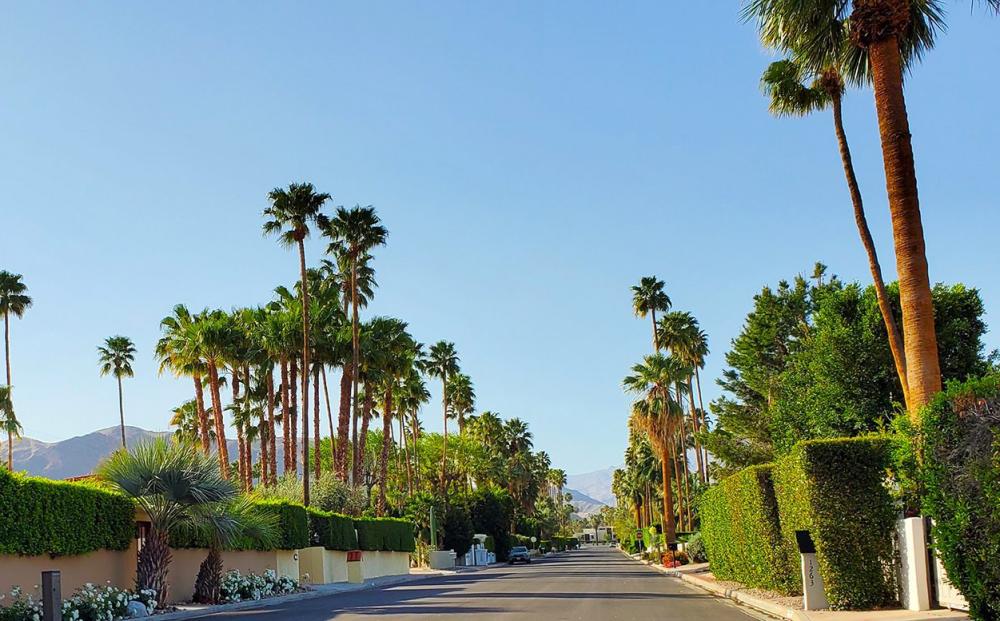
Explore Historic Deepwell Ranch Neighborhood: Self-Guided Bike Tour 🚴♂️
Demuth Park
Once known as the “Veteran’s Tract” after WWII, Demuth Park is now one of the city’s most family-friendly neighborhoods. It’s home to the largest public park in Palm Springs—61 acres of green space, sports fields, and a community center. Architecture here leans toward ranch-style homes, and there’s a charming mix of residential life and local businesses.
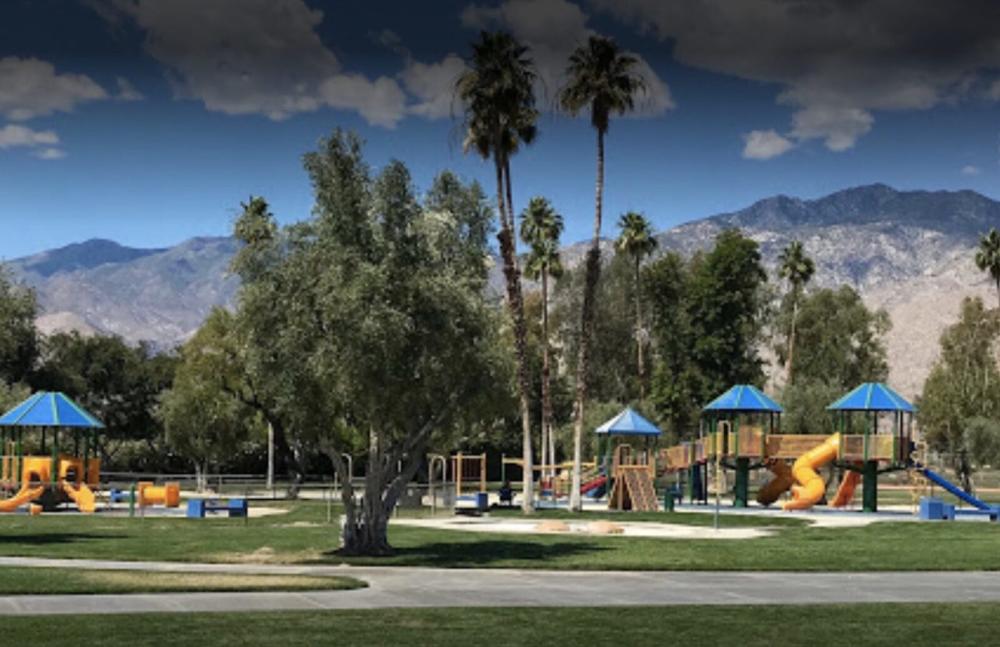
Desert Highland Gateway Estates
Tucked into the north entrance of Palm Springs off Indian Canyon Drive, this close-knit neighborhood may be small, but it’s mighty in spirit. Desert Highland features community-focused spaces like the James O. Jessie Desert Highland Unity Center, complete with a baseball field, basketball courts, and picnic areas.
Desert Park Estates
In the late 1950s, visionary Noel Clarke transformed 1,000 acres into the Ranch Club and Desert Park Estates. With help from midcentury master Hugh Kaptur, this neighborhood blossomed into a stylish blend of post-and-beam homes with sloped roofs, alongside Spanish Revival and modern builds. Today, it’s still a laid-back retreat—home to the beloved Monkey Tree Hotel and a mashup of classic and contemporary desert homes.
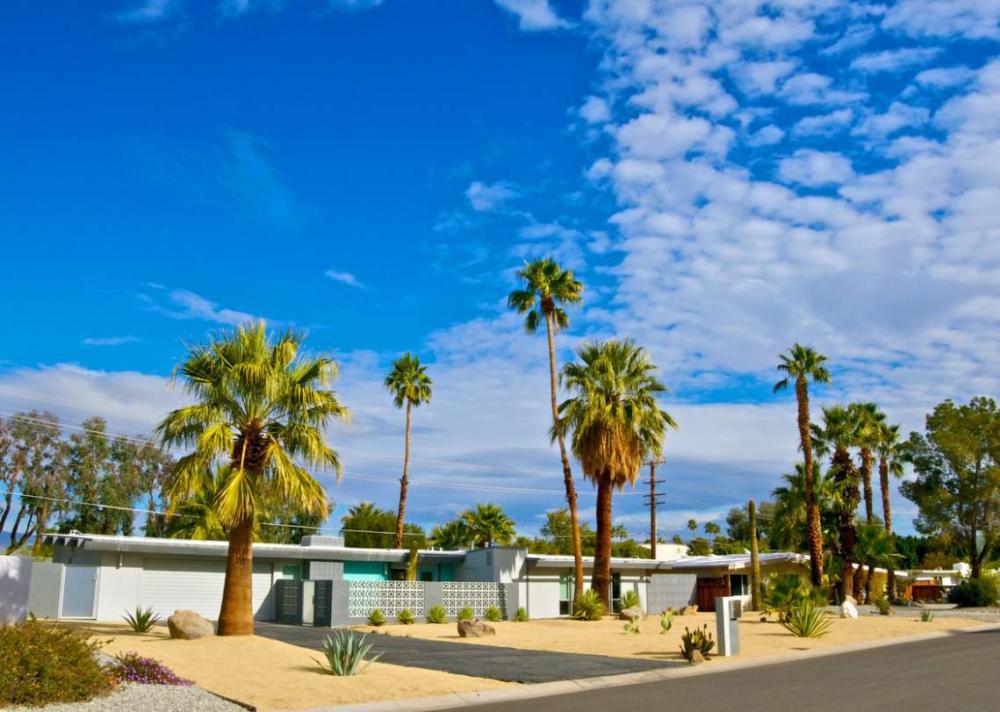
El Mirador
Once a glitzy hotel destination for Golden Age Hollywood stars, El Mirador lives on through its charming streets and the landmark Desert Regional Medical Center tower. Built in the 1920s, the original El Mirador Hotel drew celebs like a magnet. While the resort is gone, the legacy remains—and many homes here reflect the glamour of the past.
El Rancho Vista Estates
A midcentury dream tucked between Gene Autry and Vista Chino, this pocket-sized neighborhood features 115 homes with a serious design pedigree. Developed in the 1950s by Roy Fey and designed by Donald Wexler and Richard Harrison, the community oozes cool. Clean lines, cul-de-sacs, and a quiet charm make it a favorite among architecture lovers.
Escena
This is one of Palm Springs' newest neighborhoods, with a 450-acre master plan that includes an 18-hole golf course and clubhouse. Alta Verde Homes, Toll Brothers, and Beazer Homes are building in Escena.
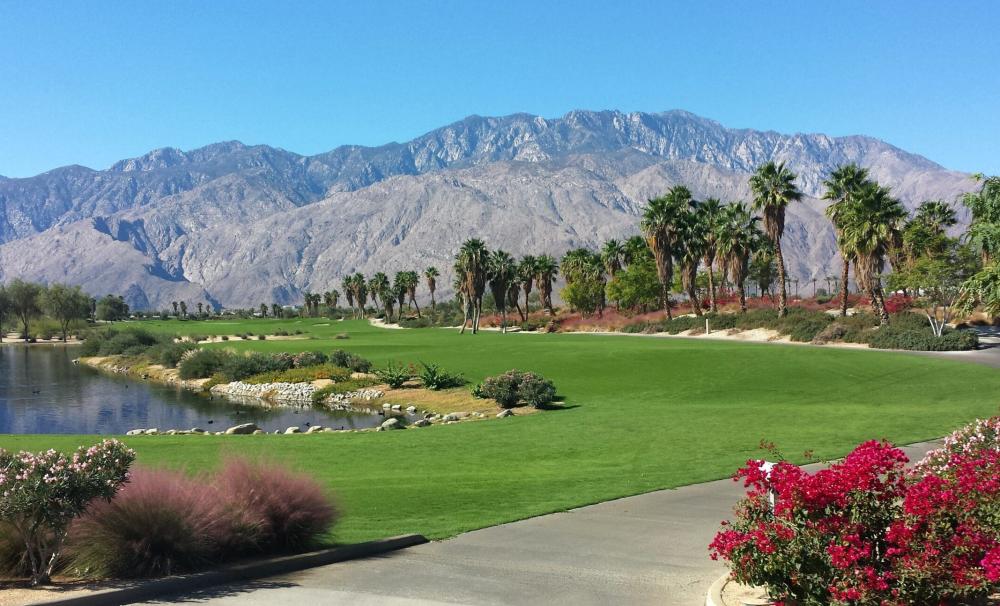
Four Season
This was developed from open land around 2005. It is a gated community for active retirees over age 55. There are 476 Mediterranean-style homes with a central lodge in the heart of the complex. The lodge features a café, ballroom, hobby room, entertainment facilities, and fitness center, among other amenities.
Gene Autry
Named for the “singing cowboy” who lived in Palm Springs, the Gene Autry neighborhood is a well-maintained, 100 percent residential neighborhood in northeast Palm Springs. It is distinguished by over 100 homes designed by the famous midcentury architect Hugh Kaptur.
Historic Tennis Club
The Historic Tennis Club neighborhood is the beating heart of Downtown Palm Springs. With 11 structures registered as historic, the past and present intersect on every corner. The neighborhood is also home to nearly two dozen boutique hotels, making this part of Palm Springs unique.
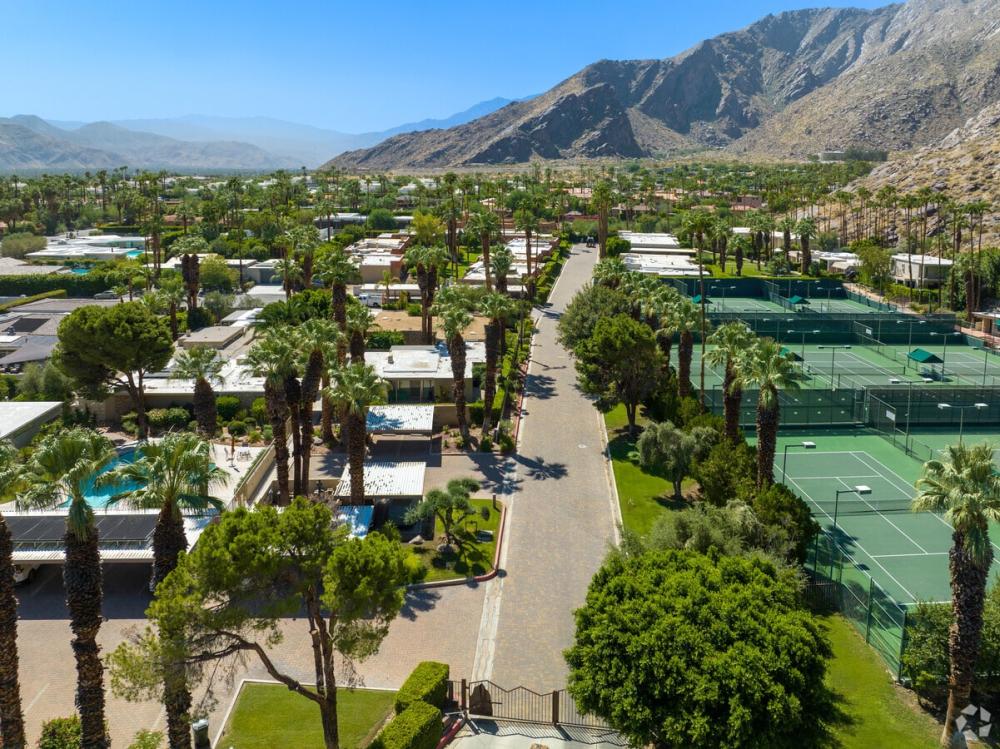
Historic Tennis Club Neighborhood Self-Guided Tour
⛳ Indian Canyons
Originally built in the 1960s, Indian Canyons primarily comprises midcentury modern custom homes designed by such noted architects as Dan Palmer, William Krisel, Stan Sackley, and others. It was a magnet for celebrities like Bob Hope, Sinatra’s Rat Pack, and many more. The Indian Canyons neighborhood is situated near the entrance to a cove protected from the full brunt of the desert winds and the summer sun's intensity. The area is adjacent to the world's largest grove of wild palm trees.

Lawrence Crossley
Lawrence Crossley is a neighborhood of 68 residents, with an additional 42 homes to be built. The western neighborhood is named after Lawrence Crossley, a prominent African-American businessman who helped develop Palm Springs and maintained strong relationships with different members of the community and the Aqua Caliente Band of Cahuilla Indians despite the city's segregation.
Little Beverly Hills
Little Beverly Hills is a neighborhood of 84 detached homes and two apartment complexes. The Alexander Construction Company or competing midcentury developer Jack Meiselman built all the detached homes. Legend has it that Bob Alexander named the streets after things he enjoyed, including his Beverly Hills home, so many streets are the same as their famous counterparts.
Little Tuscany
This Italian-named neighborhood began in 1934 when architect Alvah Hicks built seven Tuscan-style homes amidst Palm Springs’ rocky hillside outcroppings. The neighborhood now boasts notable midcentury homes, including:
- Kaufmann House
- The May House
- The Edris House
- The Palevsky House
- Elvis Presley's residence
- The Kramer House
Little Tuscany is distinguished by its spectacular elevated vistas across the valley floor to the area’s landmark wind turbines.
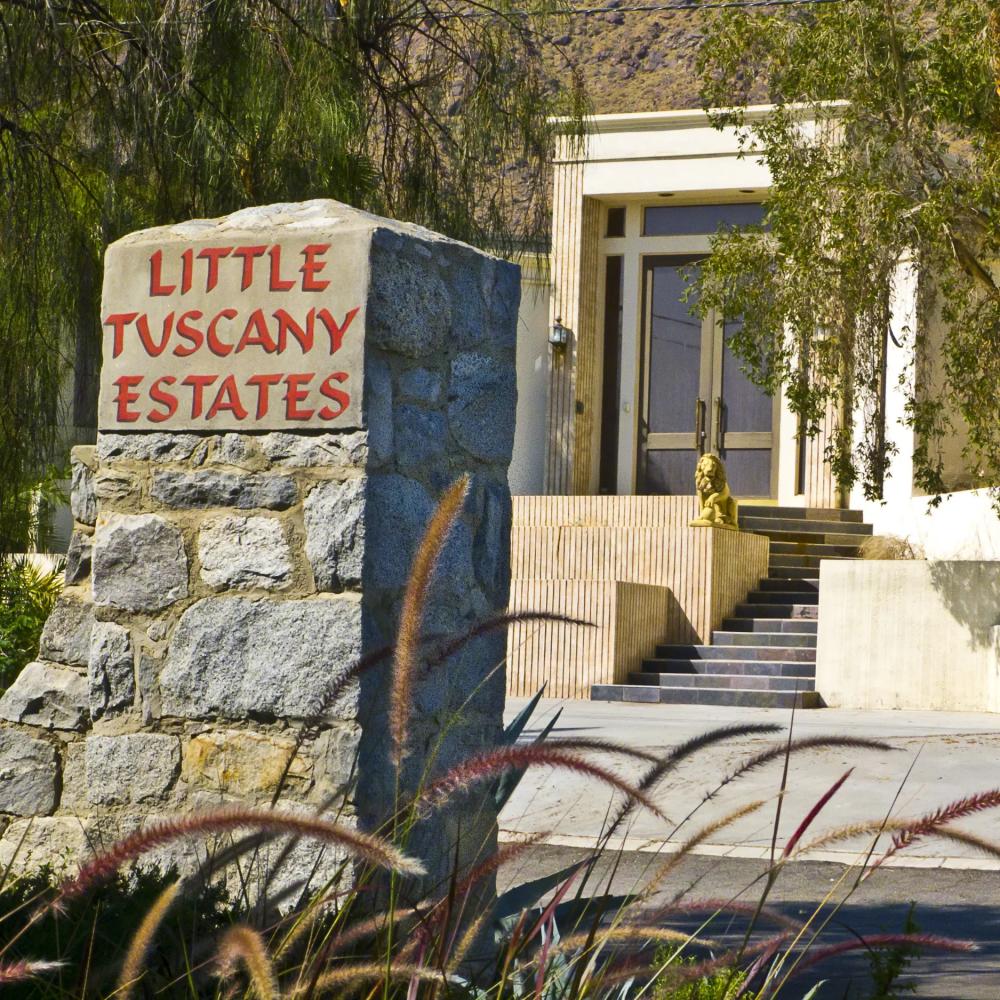
Los Compadres
Spanish for “The Friends,” Los Compadres lives up to its name with a welcoming vibe and classic desert style. Once home to a famed horse ranch and rodeo grounds, the area has evolved into a quiet, residential retreat with ranch homes, pools, and a little more breathing room than you’ll find closer to downtown. Great for families and weekenders alike.
Melody Ranch
“Melody Ranch” was the name given by singing cowboy Gene Autry to the hotel he purchased in 1961. The neighborhood has grown to include that original hotel (The Parker), the Seven Lakes Homeowners Association, the Oasis Resort, and the Canyon Sands Homeowners Association. Each contributes uniquely to its beauty.
The Mesa
Perched on the rugged hillsides of South Palm Springs, The Mesa is a tucked-away world of architectural surprises—from 1920s Spanish villas to modernist masterpieces. The area is as eclectic as Palm Springs itself and features a variety of architectural styles, including native adobe, Spanish-inspired, midcentury modern, and contemporary. Famous former residents of this neighborhood include:
- Sonny Bono
- Cher
- Rita Hayworth
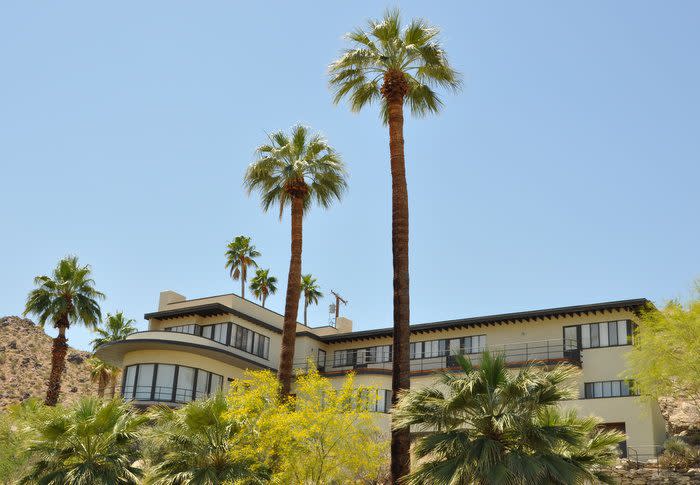
Mountain Gate
This neighborhood was built in 2003 and is the new “in” neighborhood, as it is the first residential development seen coming into Palm Springs from the north. The neighborhood consists of 450 sophisticated, contemporary residences, with plans for more. Each winding road gives neighbors a different perspective of the beautiful mountains surrounding Palm Springs.
The Movie Colony
In the mid-1920s, Palm Springs transformed from a health resort destination to a residential community. At that time, Hollywood discovered the desert city’s proximity to Los Angeles, and the ‘anything goes’ atmosphere made it a great place to unwind. Notable residents include:
- Frank Sinatra
- Bob Hope
- Rory Calhoun
- Cary Grant
With a collection of Spanish Colonial Revival and other revival styles mixed with midcentury modern and other minimalist forms, the Movie Colony is as unique as its amazing history.
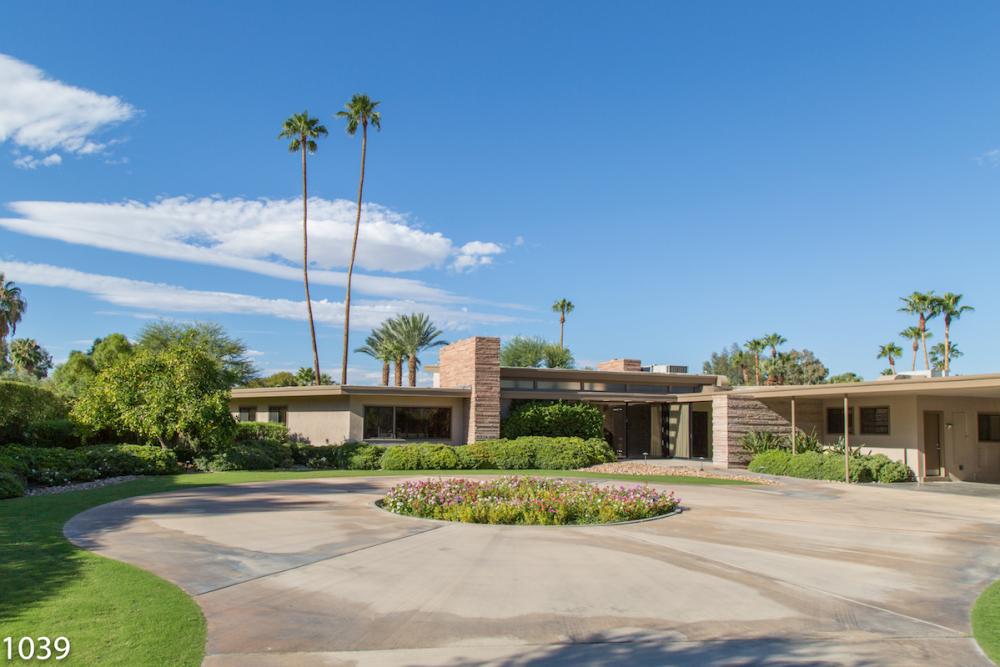
Oasis Del Sol
Located between Farrell Drive and Sunrise Way, this neighborhood is perfectly situated for easy access to the Airport and is not far from the bustling, unique downtown area. Oasis Del Sol is home to a variety of great single-family homes and businesses, making this neighborhood a comfortable place for residents and visitors alike.
Old Las Palmas
Old Las Palmas has approximately 290 detached homes at the base of Mount San Jacinto. This neighborhood's homes reflect every period of Palm Springs development: old Spanish, Western, mid-century, contemporary, and postmodern styles. Notable residents in this community include:
- Judy Garland
- Lucille Ball and Desi Arnaz
- Leonardo DiCaprio
- Kirk Douglas
Then and now, ownership of A-listers was so prevalent that every property could claim a Hollywood connection.
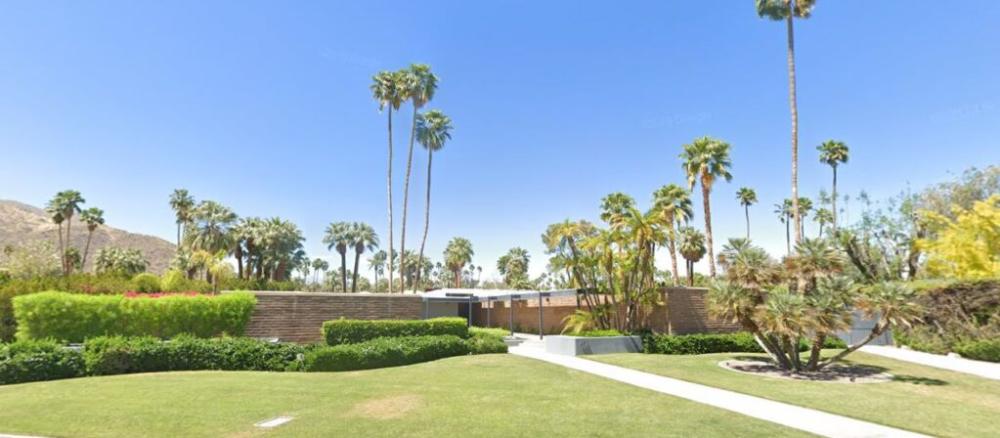
Parkview Mobile Estates
Parkview Mobile Estates is a distinguished, attractive, affordable, well-situated, 55-and-older community with character. Parkview differs from most mobile home parks with its unique grouping of styles.
Racquet Club Estates
This neighborhood is known for its style. Featuring post-and-beam construction, soaring rooflines, clerestory windows, open floor plans, and blurred lines separating outdoors and in, the vast majority of the 500-plus single-family homes are iconic midcentury designs by architects William Krisel, Jack Meiselman, and Donald Wexler. Wexler pioneered the strikingly original ‘steel homes’ that introduced prefabricated, steel-and-glass construction of affordable housing explicitly created for the desert, and is seen prolifically in this neighborhood.

Racquet Club West
Racquet Club West is prized for its large lots and range of architectural styles. The 460 households include family homes and sizable estates, modest apartments, and luxury condos. Many of these were designed by renowned midcentury architects, and none are very far from Hollywood’s hallowed ground in the desert. The neighborhood also incorporates the famous Racquet Club, where many Hollywood stars frequented to play tennis and lounge around the pool.
Ranch Club Estates
300 beautiful midcentury homes are situated around the Ranch Club, the largest and most popular social club in Palm Springs during the 1950s. Designed by architect Hugh Kaptur, the homes are all low set, with gently sloped roofs, post-and-beam construction, and insulated ceilings.
Sonora Sunrise
This neighborhood successfully combines a relaxing desert ambiance with classic Palm Springs cool. Scenic bike routes and hiking trails nearly surround Sonora Sunrise. It is also home to the Purple Room at the Hotel Trinidad, which Frank Sinatra and the Rat Pack used to host.
Sunmor Estates
Central Palm Springs’ Sunmor neighborhood is a remarkably intact collection of midcentury homes. Most 141 residences still maintain their modernist rooflines, breezeways, clerestory windows, and other classic architectural features of the 1950s and 60s. During World War II, the western portion of the Palm Springs Army Airfield was located where the original Sunmor Estates tract was later built. You can still see the circular concrete pads where military planes were tied down.

Sunrise Park
Centrally located, this neighborhood is less than 1 mile from downtown and Uptown Palm Springs. The quiet residential area is dotted with midcentury homes, including several post-World War II tract houses designed or developed by some of the era's most innovative and influential names. Sunrise Park is also home to the Palm Springs Cultural Center, where many of the city's film festivals are held.
Sunrise Vista Chino
A tranquil enclave in north-central Palm Springs, Sunrise Vista Chino offers a variety of residential styles, including the unique Sagewood condominiums, Ranch Club Estates, and Philip Caplin Vista Sunrise. Today’s residents live in the diversity and convenience of their neighborhood, its colorful history, and its proximity to essential services and downtown.
Tahquitz Creek Golf
Located near the eastern corner of South Palm Springs, this neighborhood comprises condominiums and single-family homes in and around the championship Lawrence Hughes-designed Tahquitz Creek Golf Resort. The neighborhood is adjacent to the scenic Tahquitz Creek Wash, and the 900 homes represent several architectural styles.

Tahquitz River Estates
The neighborhood was first fashioned in the early 1930s to build small Spanish Revival homes. Now, thanks to earthmovers and a bridge, it has expanded to incorporate many modernist homes, quirky motor courts, hotels by noted architects Howard Lapham and Hugh Kaptur, an Albert Frey-designed church, and what may be Palm Springs' first modernist residence—a home dating to 1933 by architect William Gray Powell.
Twin Palms
Twin Palms was the birthplace of large-scale Modernism in Palm Springs. It was the first midcentury modern neighborhood completed by the Alexander Construction Company and the city's first truly modern housing tract.

Vista Las Palmas
Architecture and celebrities continue to make history in this Palm Springs neighborhood. Vista Las Palmas is a stunning neighborhood of iconic midcentury homes. Hollywood celebrities discovered the neighborhood early in the last century, around the same time residential air conditioning was making its debut. Entertainment executives and performers still own homes in Vista Las Palmas today.
Vista Norte
Vista Norte residents enjoy unrestricted views in every direction thanks to its central location and underground utilities. The neighborhood comprises approximately 400 single-family, detached residences, some of which were built as early as the 1940s.
Warm Sands
This neighborhood is among the most historic and diverse in Palm Springs. It is approximately one-half square mile and contains historic Spanish-style houses from the 1920s and 1930s, mid-century modern homes from the 1950s and 1960s, and many historical resorts and hotels with significant historical significance. It's known for having a concentration of gay clothing-optional resorts.
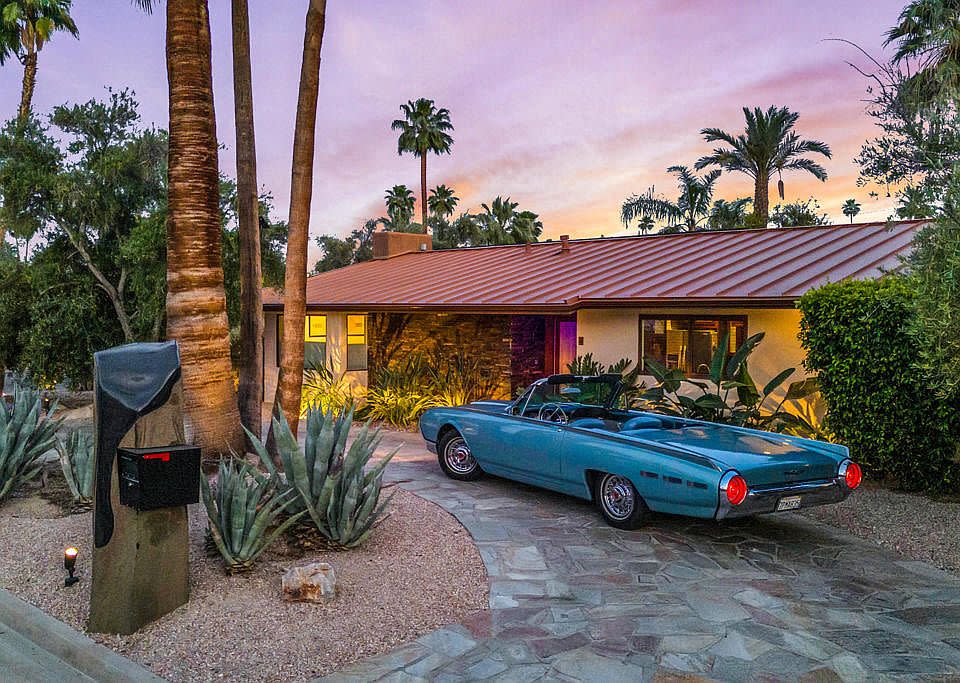
Palm Springs Historical Society Walking Tours